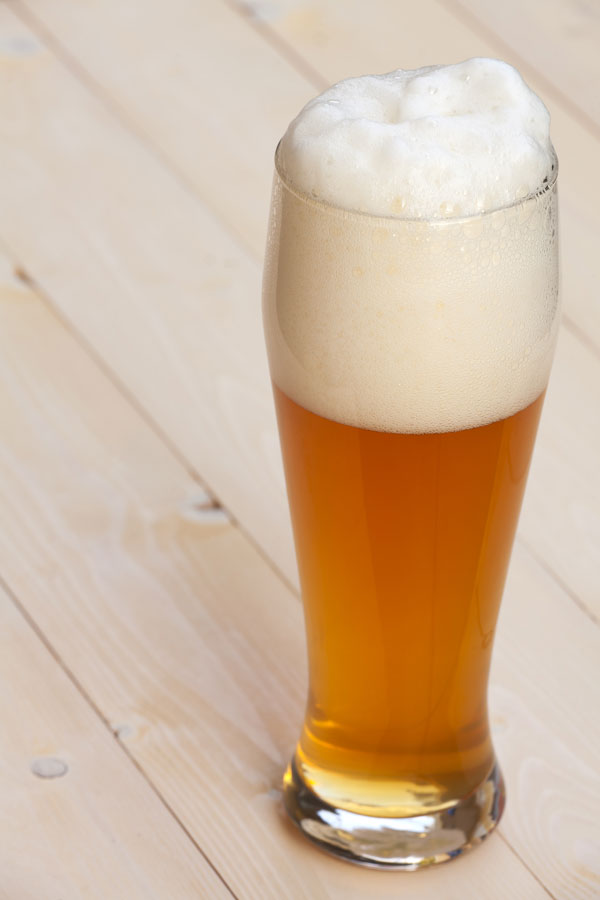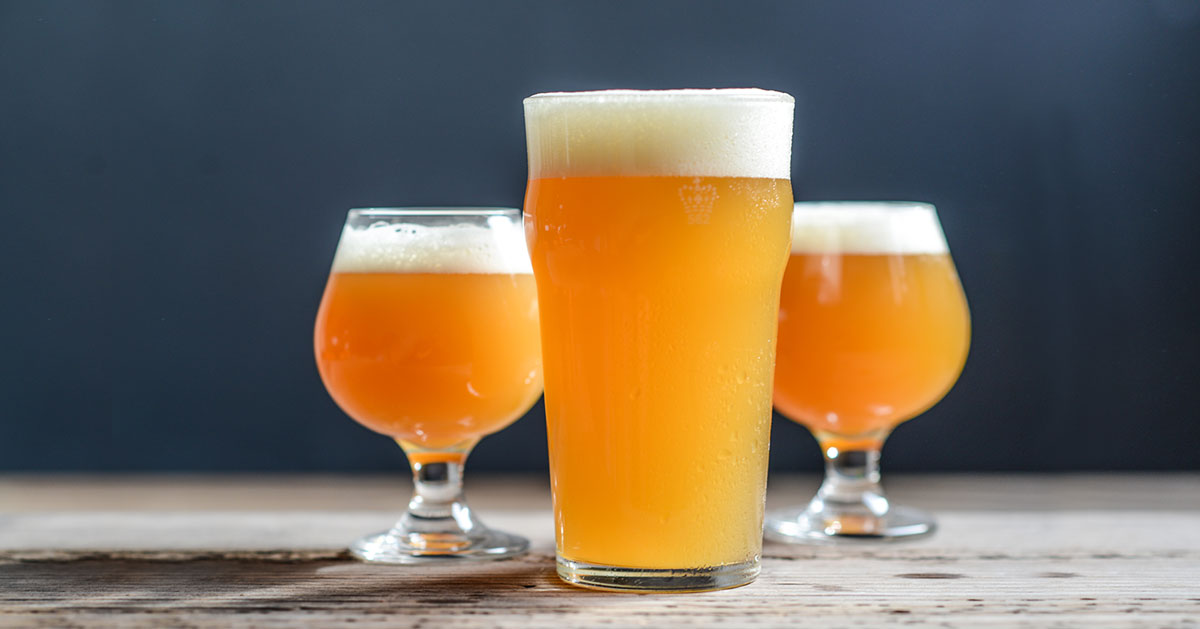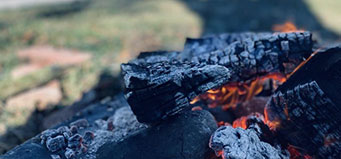The Comeback Kid: Breakin’ the Law Gose
 Hello there, and welcome to another edition of Brew Along With Us, Great Fermentations’ recipe of the month blog! Spring is now here, and before long it will be summer, a time when light, refreshing beers will be in high demand. And what better way to celebrate the melting of the snow and the gradual return of warmth and life than with a light, somewhat sour and salty beer style known as Gose (pronounced gose-uh)?
Hello there, and welcome to another edition of Brew Along With Us, Great Fermentations’ recipe of the month blog! Spring is now here, and before long it will be summer, a time when light, refreshing beers will be in high demand. And what better way to celebrate the melting of the snow and the gradual return of warmth and life than with a light, somewhat sour and salty beer style known as Gose (pronounced gose-uh)?
Gose is a style of beer that has actually gone extinct from commercial brewing several times during its long and illustrious history, but is now being rediscovered throughout the world, namely here in the United States. Originating in the German city of Goslar, along the banks of the river Gose, this style is known for a saltiness that undoubtedly came from the salt and mineral-rich waters of its namesake town. Working with what they had, the brewers of the region developed this wheat-heavy, lightly sour style that later became associated with the city of Leipzig, where consumption and production both gradually moved.
My first experiences with gose were American commercial examples brought to my house by a friend who really knows his exotic beers. It was quite refreshing! Slightly salty, spicy, sour and dry, Gose can be drunk straight, or like Berliner Weiss (which it is often compared), can be dosed with woodruff or raspberry syrup to sweeten the beer and cut through the salt. It gets its characteristic spice from coriander, and saltiness from salinization of the beer. In most recipes I’ve seen, this comes from adding a portion of non-iodized sodium chloride directly into the end of the boil, along with whole, crushed coriander.
Sourness is a characteristic feature of the beer which would traditionally have come from spontaneous infection of the beer by a lactobacillus culture during fermentation. However, modern brewers have a few different methods to sour the beer. Of course, you could make a lactobacillus starter and pitch that into the wort before beginning fermentation with a regular ale strain. However, you could also incorporate acidulated malt into the mash or dose the final product with lactic acid to taste. Or, a mix of these methods could be attained. For this gose, I’m using acid malt, so as not to introduce lactobacillus into the brewing process, and because I’m going with a lighter-flavored finished product. But this is your playground, have fun with it! (Just be sure to stay clean and sanitary so as not to cross-contaminate your home brewery with lacto bacteria!) You may choose to dose the final product to taste with lactic acid if you desire more sourness, but again: have fun with it!
The brewing of Breakin’ the Law Gose (so called because it incorporates ingredients forbidden by the German Reinheitsgebot) is a little different than most beers you may have brewed, but hopefully it will yield a wonderful creation like none you’ve ever made! I’ll admit, this is my first attempt at the style. There are a number of wonderful resources on brewing gose in books and on the internet, including some incredible information from Brew Your Own, to which I am indebted. Have fun, keep calm, and brew on!
Breakin’ the Law Gose Recipe (for final volume of 5.5 gallons)
Specs
Estimated O.G. = 1.042
Estimated F.G. = 1.009
Estimated ABV = 4.4%
Estimated bitterness = 5 IBUs
Grain Bill
4.5 lbs. White wheat malt
3 lbs. German Pilsner malt
1.5 lbs. Acidulated (acid) malt
Hops, Spices & Salt
0.5 oz. Hallertau hops (2.8% AA), added at the beginning of the 60 minute boil
1 oz. Whole coriander, cracked, added with 10 minutes left in the boil
0.5 oz. kosher or other non-iodized salt, added with 10 minutes left in the boil.
Yeast
1 pack (or make an appropriate starter) Wyeast 2565 Kolsch yeast, Wyeast 1007 German Ale yeast, Wyeast 1056 American Ale yeast, or 1 pack Safale S-05 dry yeast.
Brewing Process
- Mash the wheat and pilsner malt at 148F for 60 minutes. Add the acid malt to the mash, attempting to maintain a consistent mash temperature of 148F for another 45 minutes. Drain, mash and sparge. Proceed with boil as normal.
- Chill to 66F, pitch yeast and ferment for two weeks.
- A secondary fermentation for one week to improve clarity is optional.
- Before bottling or kegging, you may choose to add lactic acid for more sourness. If doing so, start out with a small amount and add to taste. I would dose the 5 gallons with 1 teaspoon at a time until the desired sourness is achieved.
Extract Version: Replace the wheat malt with 3 lbs of wheat dry malt extract, and the pilsner malt with 2 lbs of light dry malt extract. Steep the acid malt grains at 150-155F for 30 minutes using a muslin grain bag. Remove the bag, allowing the grains to drain into the boil kettle, and rinse the grains with an additional ½ gallon of water at 170F. Allow the rinsed grain bag to drain for 15 to 20 minutes. Turn off the flame and dissolve the extracts thoroughly. Turn the flame back on, bring to a boil and proceed as normal.



How did this go?
Justin – Wes here with Great Fermentations. Thank you for your question! This went quite well! I got varying opinions from a range of BJCP judges the last time I brewed it. The opinions were all over the place, but the best comment I got from one of the master judges was that it was VERY close to an actual Leipziger gose she had in Leipzig, Germany. We have had several customers who love this recipe as well, and have brewed it many times. Cheers!
Do you think this could be done as a single infusion mash
Brendan, Wes here with Great Fermentations. Thank you for your question! I would probably avoid adding the acid malt with the rest of the grains, as this may overly acidify the mash right off the bat and could mess with conversion and other pH-related factors in the mash. However, what I tell people is that this is your playground, have fun with it! I’m sure you would still have beer in the end, and it’s gonna be awesome because it’s something you made, right? I’d probably hold off on adding the acid malt until the main conversion has been achieved myself, but if you do try adding all the grains at once, let us know how it turns out for you. Cheers!
I made a single infusion biab 2.5 gallon batch, and it turned out very well, better even than some of the american craft gose I have tried. (personal bias). I am going to increase the salt and decrease the coriander for my next attempt.
We just did a version very similar. Never attempted a gose before. We’re concerned about the way it tasted when going into primary. Was very sweet. No sour notes at all. Is this normal? Will the sour flavor come out after fermentation?
Elizabeth – Wes here with Great Fermentations. Thank you for your question! Fermentation should help to take the sweetness out and the beer will hopefully have a slight sour edge by the end, provided the instructions were followed. The wort will be sweet pre-fermentation, and that is to be expected. However, one thing you can do is adjust the sourness to taste with lactic acid as per the instructions if you would like it to be more sour before bottling or kegging. I hope this helps! Cheers, Wes
Is there a desired Ph you are looking for in the finished product or prior to fermentation or just taste preference after kegging? I plan to attempt this as my first Gose and have read on several occasions about targeting a certain Ph. This seems simpler!!Thanks
Christopher – Wes here with Great Fermentations. Thank you for your question! We don’t really look for a specific finishing pH with this particular recipe. We are trying to keep it simple, so for the purposes of this particular beer, we are going more with flavor as an indicator of sourness than an exact pH. If more sourness is needed after following the recipe, you can dose with lactic acid. I hope this helps! Cheers, Wes
Thanks for the reply Wes. Looking forward to this brew.